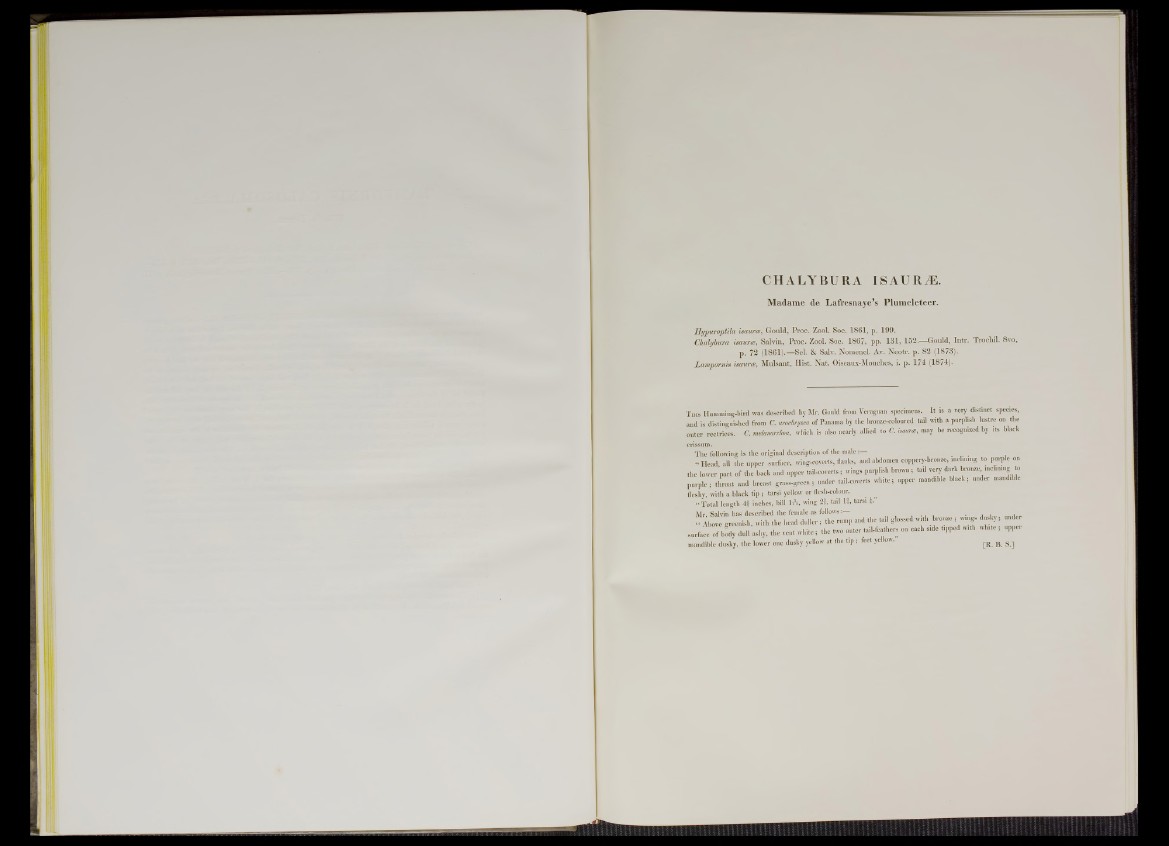
CHALYBURA ISAURÆ.
Madame de Lafresnaye’s Plumeleteer.
Hypu ro p tila isauræ, Gould, Proc. Zool. Soc. 1861, p. 199.
Chalybura isauræ, Salvin, Proc. Zool. Soc. 1867, pp. 1 31, 1 52.— Gould, Intr. Trochil. 8vo,
p . 7 2 (1 8 6 1 ).— Sel. & Salv. Nomencl. Av. Neotr. p. 8 2 (1873).
Lampornis isauræ, Mulsant, Hist. Nat. Oiseaux-Mouches, i. p. 17 4 (1874).
T his Humming-bird was described by Mr. Gould from Veraguan specimens. It is a very distinct species,
and is distinguished from § urochrysea of Panama by the bronze-coloured tail with a purplish lustre on the
outer rectrices. C. melanorrhoa, which is also nearly allied to C. isaura, may be recognized by its black
crissum.
The following is the original description of the male ^ 9 . . . . ,
“ Head all the upper surface, wing-coverts, flanks, and abdomen coppery-bronze, mchnmg to purple on
the lower part o f the back and apper tail-coverts; wings purplish brown; tail very dark bronze incbning to
purplei throat and breast grass-green; under tail-coverts white; upper mandible black; under mandible
fleshy, with a black tip ; tarsi yellow or flesh-colour.
“ Total length 4t inches, hill 1* , wing 21, tail l i , tarsi i .”
Mr. Salviu has described the female as f o l l o w s I
Above greenish, with the head duller; the rump and the tad glossed with bronze ; wings dusky,
surface of bfdy dull ashy, the vent white ; the two outer tail-feathei, on each side tipped with white ; upper
mandible dusky, the lower one dusky yellow at the tip; feet ye ow. ^ R g ^